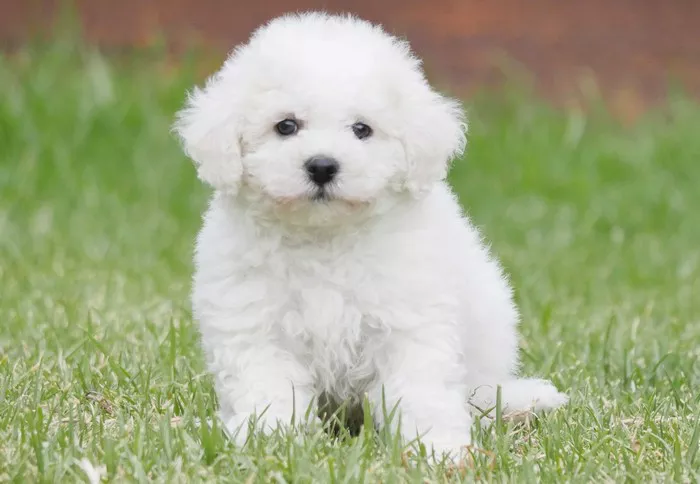The Bichon Frise, with its fluffy white coat and cheerful demeanor, is a beloved companion dog worldwide. But where did this charming breed originate? Tracing its roots reveals a rich history spanning centuries and continents. This article explores the origins, evolution, and global journey of the Bichon Frise, combining historical records, genetic studies, and cultural influences to answer this question in detail.
Historical Origins: A Mediterranean Beginning
The Bichon Frise’s story begins in the Mediterranean region, particularly around the Canary Islands, where its ancestors thrived as early as 600–300 BCE. These small, white dogs were likely descendants of ancient Mediterranean breeds, including the Barbet (a water spaniel) and the Maltese, though their exact lineage remains debated.
By the 13th century, Spanish sailors discovered these dogs on Tenerife, one of the Canary Islands, and began trading them across Europe. The breed’s popularity soared in Spain, where it was known as the “Tenerife Dog” or “Bichon Tenerife”.
The European Nobility’s Favorite
During the Renaissance era, Italian sailors introduced the Bichon to mainland Europe, where it quickly became a status symbol among royalty and aristocrats. In France, the breed gained prominence under King Francis I (1515–1547) and later became a favorite of King Henry III (1574–1589), who famously carried his Bichon in a decorative basket.
The breed’s luxurious coat and playful personality made it a frequent subject in European art. Spanish painters like Francisco Goya included Bichons in their portraits of noble families, cementing the dog’s association with wealth and refinement.
Ancestry and Evolution: From Sailors to Street Performers
The Bichon’s journey took a dramatic turn in the 18th century. As European monarchies declined, the breed fell out of favor with the elite. Many Bichons were abandoned and became companions to street performers, organ grinders, and circus troupes. Their intelligence and agility made them natural entertainers, and they thrived in this new role, endearing themselves to the general public.
Breed Standardization and Revival
By the early 20th century, dedicated breeders in France and Belgium worked to revive the Bichon Frise. In 1933, the French Kennel Club established the first official breed standard, naming it “Bichon à Poil Frisé” (curly-haired lap dog). The breed was later recognized by the Fédération Cynologique Internationale (FCI) as a French-Belgian hybrid.
The Bichon’s global expansion began in 1956, when an American family imported the first Bichon Frise to the United States. The American Kennel Club (AKC) officially recognized the breed in 1972, solidifying its place in modern dog shows and households.
Physical and Behavioral Traits: A Breed Apart
Distinctive Appearance
Coat: The Bichon’s double-layered, hypoallergenic coat is pure white (occasionally with cream or apricot shading), requiring regular grooming to prevent matting.
Size: Compact and sturdy, Bichons weigh 10–18 pounds (4.5–8 kg) and stand 9–12 inches (23–30 cm) tall.
Features: Round, dark eyes; a black nose; and a plumed tail that curves over the back.
Personality
Bichons are known for their playful, affectionate, and adaptable nature. They form strong bonds with families, thrive on human interaction, and adapt well to apartment living. However, their high intelligence requires mental stimulation to prevent boredom-related behaviors.
Modern Bichon Frise: A Global Companion
Today, the Bichon Frise ranks among the top 50 most popular dog breeds in the U.S.. Its hypoallergenic qualities and manageable size make it ideal for urban dwellers and allergy sufferers.
Breeding and Care Considerations
Health: Common issues include patellar luxation, allergies, and dental problems.
Grooming: Professional grooming every 4–6 weeks is essential to maintain coat health.
Exercise: Daily walks and playtime suffice, as Bichons are moderately active.
Conclusion
The Bichon Frise’s origins in the Mediterranean, its rise among European nobility, and its resilience through centuries of change highlight its enduring appeal. From royal courts to modern homes, this breed has charmed its way into hearts worldwide. Understanding its history enriches our appreciation for the Bichon’s unique blend of elegance, intelligence, and joy.
Related Topics:
HOW TO TELL IF A BICHON FRISE IS PUREBRED
WHY IS MY BICHON FRISE’S FUR TURNING BROWN?
HOW MUCH DOES IT COST TO GROOM A BICHON FRISE?


